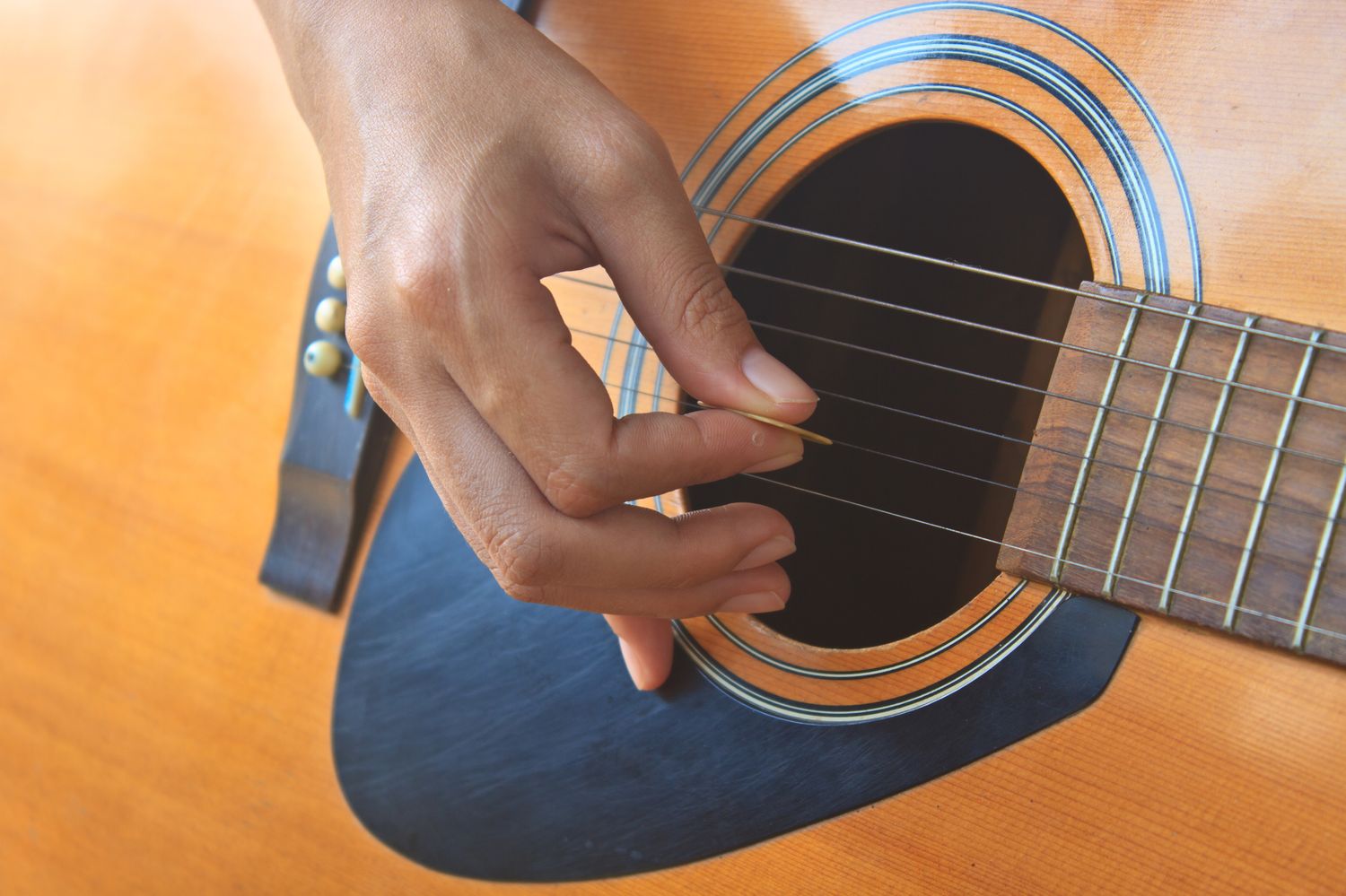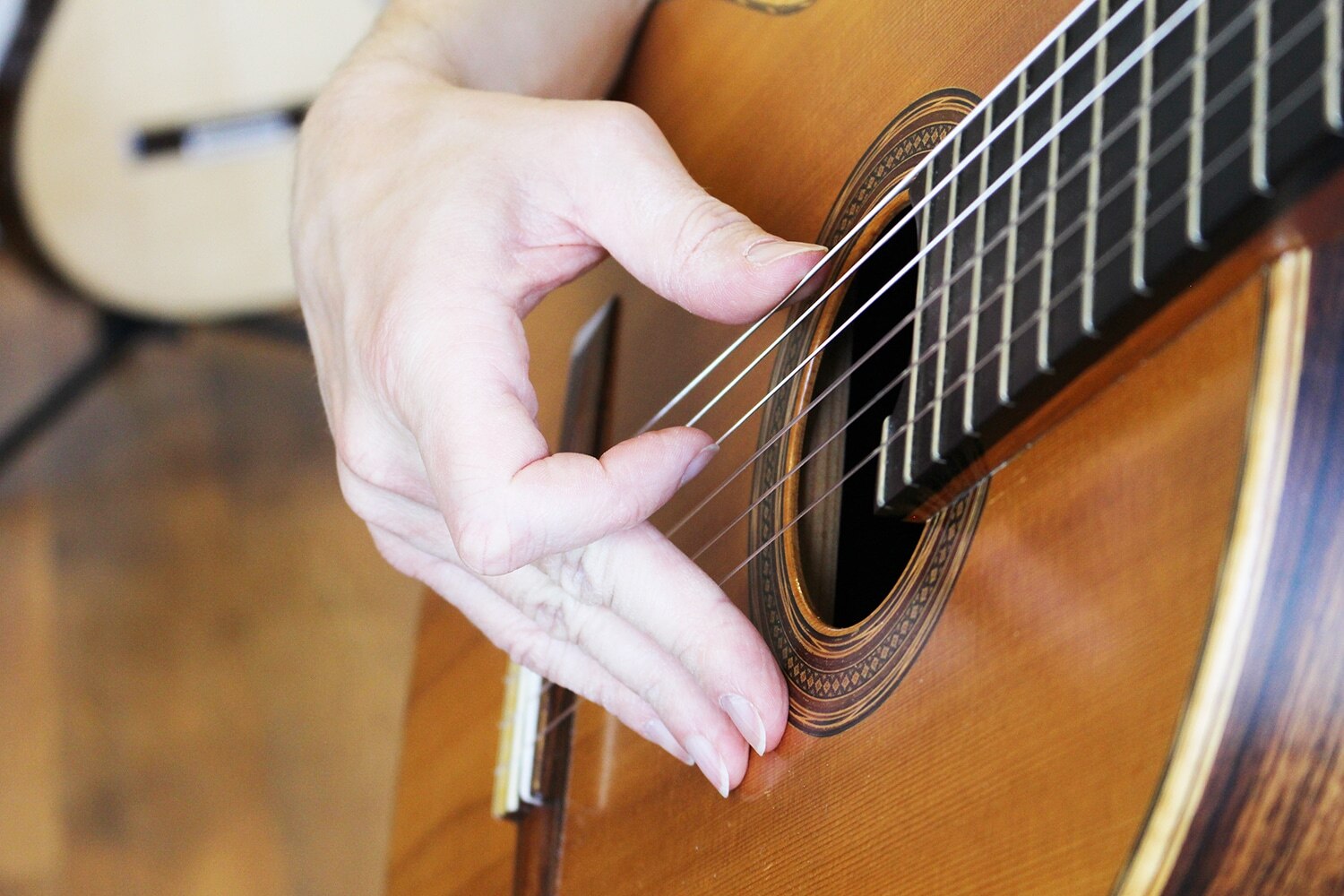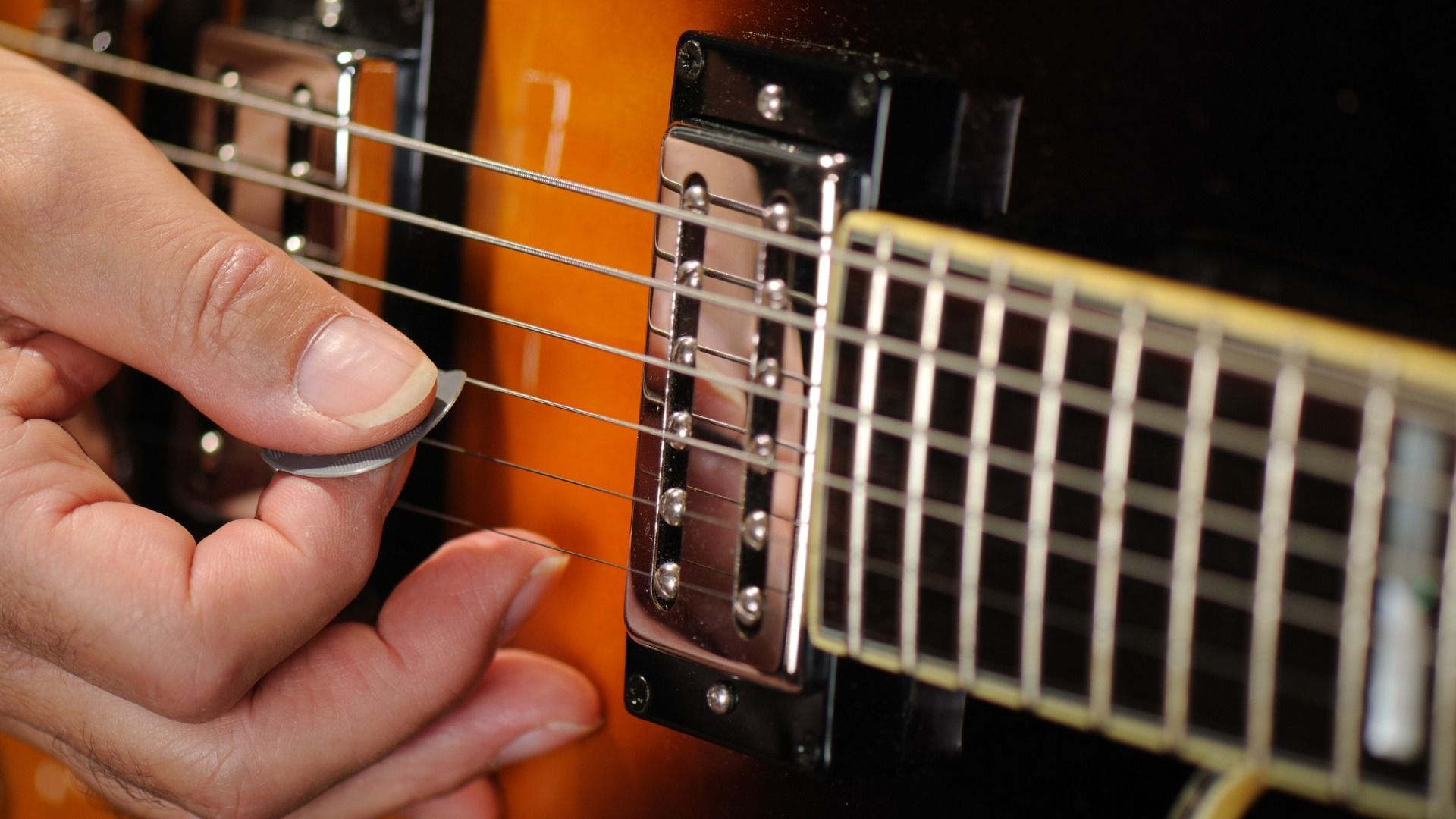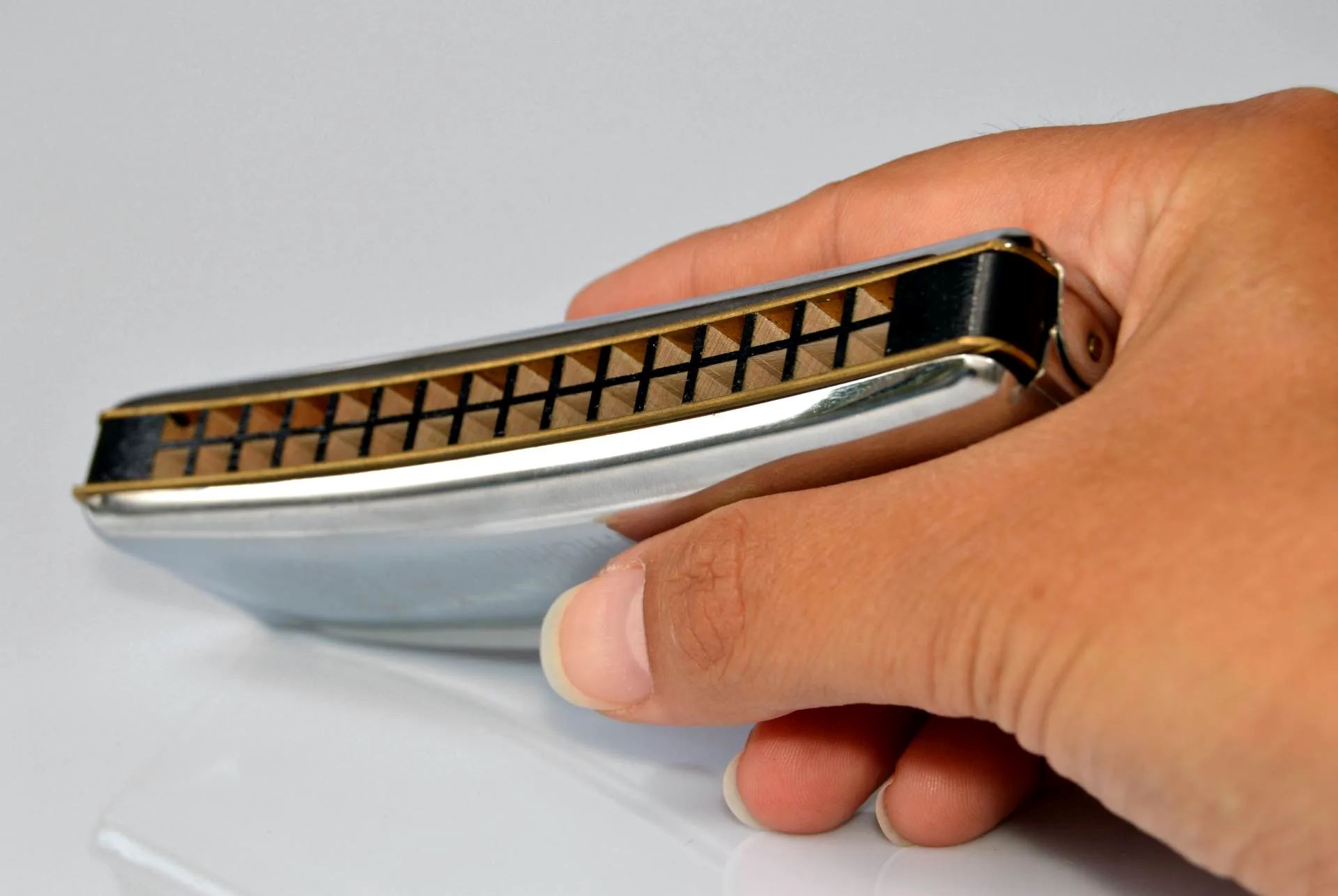Home>Instruments>Guitar>How To Hold A Guitar Neck
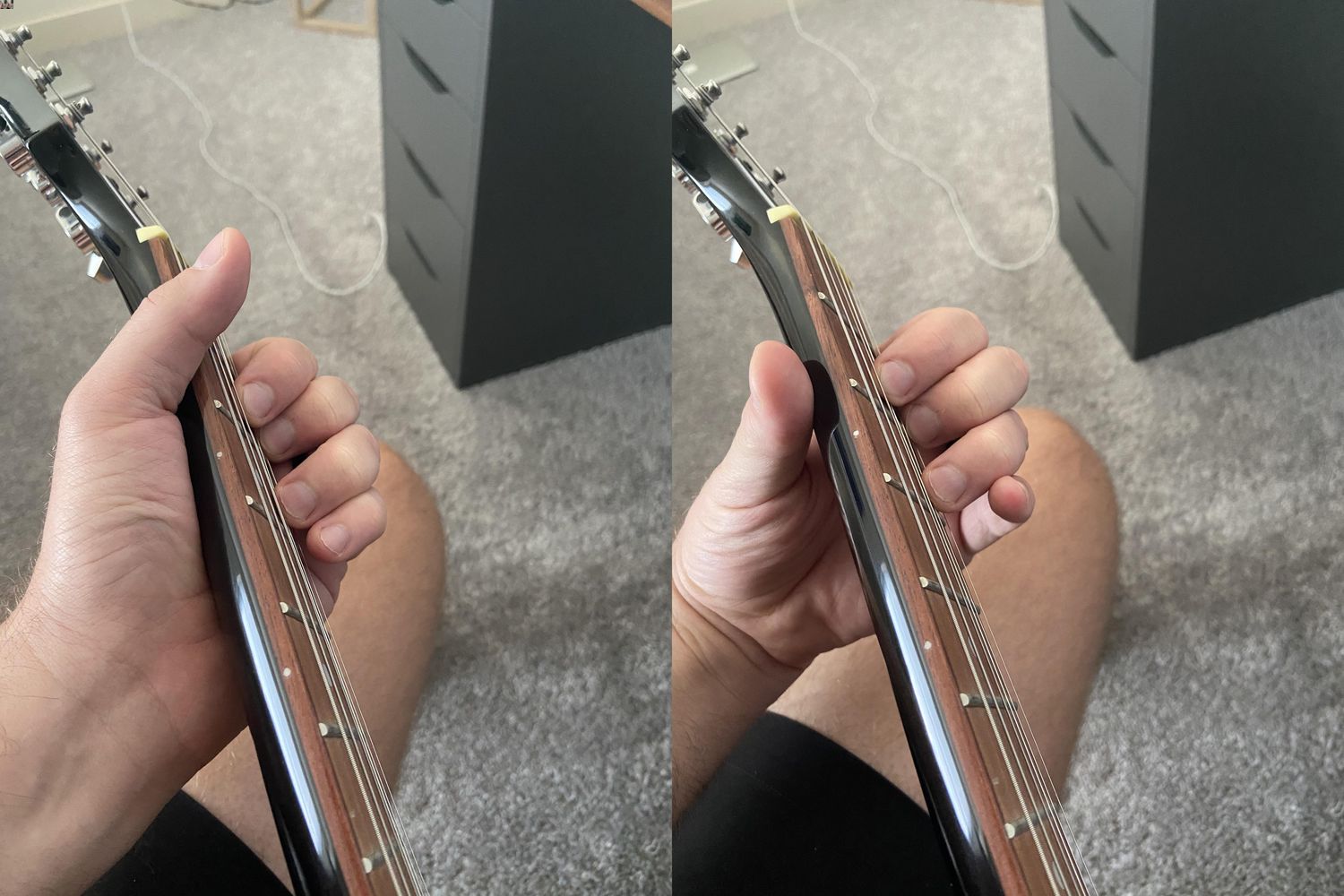

Guitar
How To Hold A Guitar Neck
Published: February 13, 2024
Learn how to properly hold a guitar neck to improve your playing technique. Get tips and guidance on holding the guitar for better performance. Master the art of holding a guitar with our expert advice.
(Many of the links in this article redirect to a specific reviewed product. Your purchase of these products through affiliate links helps to generate commission for AudioLover.com, at no extra cost. Learn more)
Table of Contents
Introduction
Introduction
Whether you're a beginner learning your first chords or an experienced guitarist mastering complex solos, understanding how to hold a guitar neck is fundamental to your playing technique. The way you position your hand on the neck of the guitar can significantly impact your playing comfort, speed, and accuracy. By mastering the proper hand and finger positioning, you can unlock your full potential as a guitarist and elevate your playing to new heights.
The guitar neck is where the magic happens—it's where you form chords, execute intricate fretwork, and unleash soul-stirring melodies. How you hold the neck directly influences the sound that emanates from your instrument. It's not just about the technical aspects; it's about connecting with your guitar on a deeper level, forming a symbiotic relationship that allows your creativity to flow unhindered.
In this comprehensive guide, we'll delve into the nuances of holding a guitar neck with precision and finesse. From understanding the basic principles to mastering the subtleties of thumb and finger placement, we'll equip you with the knowledge and techniques to optimize your playing posture. Additionally, we'll explore common mistakes to avoid, ensuring that you steer clear of habits that could hinder your progress.
So, whether you're strumming an acoustic ballad, shredding an electric guitar solo, or plucking the strings of a classical guitar, let's embark on this enlightening journey to refine your guitar neck holding technique. Get ready to elevate your playing, unleash your creativity, and forge an unbreakable bond with your instrument.
Understanding the Basics of Holding a Guitar Neck
Understanding the Basics of Holding a Guitar Neck
Before delving into the specifics of hand and finger positioning, it’s essential to grasp the foundational principles of holding a guitar neck. The way you cradle the neck of your guitar forms the backbone of your playing technique, influencing everything from chord transitions to solo execution. Here are the key elements to consider:
- Balance and Stability: Holding the guitar neck involves finding a delicate balance between stability and flexibility. Your hand should provide ample support to the neck while allowing fluid movement for fretting and transitioning between chords.
- Comfort and Relaxation: Proper neck holding technique should prioritize comfort and relaxation. Tension in your hand and fingers can impede your playing, leading to fatigue and diminished dexterity. Finding a position that feels natural and relaxed is crucial.
- Accessibility to Frets: The way you hold the neck should facilitate easy access to all the frets. Whether you’re navigating intricate solos or playing complex chord progressions, your hand positioning should enable seamless movement up and down the fretboard.
By internalizing these fundamental concepts, you lay the groundwork for a solid foundation in holding the guitar neck. As we proceed, we’ll delve deeper into the specific hand and finger placements that embody these principles, empowering you to optimize your playing posture and technique.
Proper Hand Positioning
Proper Hand Positioning
When it comes to holding the guitar neck, achieving the correct hand positioning is paramount. The way you cradle the neck forms the basis for executing chords, scales, and melodies with precision and fluidity. Here’s a detailed exploration of the key elements of proper hand positioning:
- Wrist Alignment: Your wrist should maintain a neutral and relaxed position, neither excessively bent nor overly extended. This allows for optimal mobility and minimizes the risk of strain or discomfort during prolonged playing sessions.
- Alignment with the Fretboard: Position your hand so that your fingers align parallel to the frets. This alignment facilitates efficient finger movement and minimizes the need to stretch or contort your hand unnaturally.
- Thumb Placement: Your thumb should rest comfortably on the back of the guitar neck, providing support and stability. Avoid gripping the neck too tightly with your thumb, as this can impede your finger movement and lead to unnecessary tension.
By maintaining a relaxed and natural hand positioning, you create a conducive environment for seamless fretting and chord transitions. This not only enhances your playing technique but also reduces the risk of hand fatigue and discomfort, allowing you to sustain extended practice and performance sessions.
As we delve further into finger placement and the nuances of fretting, keep these foundational principles of hand positioning at the forefront of your practice. Mastering proper hand positioning sets the stage for unlocking your full potential as a guitarist, enabling you to express yourself freely and effortlessly through your instrument.
Thumb Placement
Thumb Placement
When it comes to holding the guitar neck, the placement of your thumb plays a pivotal role in supporting your hand and facilitating smooth, efficient fretting. Here’s a detailed exploration of the key aspects of thumb placement:
- Support and Stability: Your thumb serves as a crucial anchor, providing support and stability to your hand as it navigates the fretboard. Placing your thumb in the correct position allows for controlled and precise finger movements, essential for executing chords and intricate fretwork.
- Positioning Along the Neck: Your thumb should ideally rest behind the neck, opposite your fingers. Avoid letting your thumb protrude over the top of the neck, as this can limit your finger mobility and hinder your reach across the fretboard.
- Pressure and Tension: While your thumb provides support, it’s important to maintain a balanced level of pressure. Avoid gripping the neck too tightly with your thumb, as excessive tension can impede your dexterity and lead to hand fatigue.
By honing your thumb placement, you create a solid foundation for proficient fretting and chord transitions. The role of your thumb extends beyond mere support—it acts as a guiding force, allowing your fingers to move with agility and precision across the fretboard.
As you continue to refine your thumb placement, pay attention to the interplay between your thumb and fingers. Strive for a harmonious balance that enables fluid movement and effortless navigation of chords and scales. By mastering the art of thumb placement, you pave the way for a seamless and gratifying guitar playing experience.
Finger Placement
Finger Placement
Mastering the art of holding a guitar neck hinges on the precise placement of your fingers. Whether you’re forming chords, executing intricate melodies, or navigating scales, the positioning of your fingers is instrumental in achieving optimal playability and sound production. Here’s a comprehensive exploration of the key elements of effective finger placement:
- Arching and Curvature: Maintain a natural arch and curvature in your fingers, allowing them to hover over the strings with ease. Avoid flattening or overly curling your fingers, as this can impede your reach and accuracy.
- Placement on the Fretboard: When fretting notes or chords, position your fingers close behind the frets to minimize string buzzing and ensure clear, resonant tones. This placement optimizes the pressure exerted on the strings, resulting in clean and articulate sound production.
- Independence and Mobility: Cultivate finger independence and mobility by practicing exercises that target individual finger strength and dexterity. This enhances your ability to execute complex fretwork and chord transitions with finesse and precision.
By honing your finger placement, you empower yourself to navigate the fretboard with confidence and fluency. The deliberate positioning of your fingers forms the cornerstone of expressive and articulate guitar playing, allowing you to convey emotion and nuance through each note and chord.
As you dedicate time to refining your finger placement, embrace a mindset of patience and persistence. Mastery of this fundamental aspect of guitar technique is a journey of continual refinement, marked by incremental progress and breakthroughs. With each deliberate practice session, you inch closer to unlocking the full potential of your playing through meticulous finger placement.
Tips for Holding the Guitar Neck Correctly
Tips for Holding the Guitar Neck Correctly
Mastering the art of holding a guitar neck is a multifaceted endeavor that encompasses technique, comfort, and adaptability. To elevate your playing and optimize your hand positioning, consider the following tips:
- Relax and Breathe: Prioritize relaxation in your hand and arm muscles. Tension can impede your dexterity and lead to fatigue. Take deep breaths and consciously release any unnecessary tension as you play.
- Experiment with Neck Thickness: Different guitars feature varying neck thicknesses. Explore guitars with different neck profiles to find one that aligns with your hand size and playing preferences, promoting a comfortable and natural grip.
- Utilize a Guitar Strap: When standing or performing, using a guitar strap can alleviate the strain on your fretting hand by providing additional support and stability for the guitar neck.
- Regular Stretching and Warm-ups: Incorporate hand and finger stretching exercises into your practice routine to maintain flexibility and prevent stiffness. Warm-ups prepare your muscles for playing, reducing the risk of strain and injury.
- Seek Professional Guidance: Consider consulting a guitar instructor to receive personalized guidance on hand positioning and technique. Professional feedback can offer invaluable insights and tailored exercises to enhance your approach to holding the guitar neck.
By integrating these tips into your practice regimen, you can refine your guitar neck holding technique and cultivate a harmonious relationship with your instrument. Embrace a mindset of continual improvement and exploration, allowing yourself the freedom to adapt and evolve your approach based on your unique playing style and preferences.
Common Mistakes to Avoid
Common Mistakes to Avoid
While honing your guitar playing skills, it’s crucial to be mindful of common mistakes that can hinder your progress and diminish the quality of your playing. When it comes to holding the guitar neck, steering clear of these pitfalls is essential for optimizing your technique and fostering a seamless playing experience. Here are key mistakes to avoid:
- Excessive Tension: Gripping the neck too tightly or maintaining unnecessary tension in your hand and fingers can impede your dexterity and lead to fatigue. Prioritize relaxation and fluidity in your hand positioning.
- Thumb Overextension: Allowing your thumb to protrude excessively over the top of the neck can restrict your finger movement and hinder your reach across the fretboard. Keep your thumb positioned behind the neck for optimal support and mobility.
- Flat Finger Placement: Fretting notes with flat fingers instead of maintaining a natural arch can result in muted or buzzing strings. Emphasize proper finger curvature to ensure clear and resonant sound production.
- Ignoring Ergonomics: Neglecting the ergonomic aspects of guitar playing can lead to discomfort and potential injury. Pay attention to your posture, wrist alignment, and overall body positioning to maintain a healthy and sustainable playing posture.
- Skipping Warm-ups: Failing to incorporate hand and finger warm-up exercises can leave your muscles vulnerable to strain and diminish your playing agility. Prioritize preparatory exercises to condition your hands for optimal performance.
By recognizing and actively addressing these common mistakes, you empower yourself to cultivate a refined and effective approach to holding the guitar neck. Embrace a mindset of continuous improvement and mindfulness, allowing yourself to evolve as a guitarist while mitigating obstacles that may impede your progress.
Conclusion
Conclusion
Mastering the art of holding a guitar neck is a transformative journey that transcends technical proficiency—it’s a gateway to unlocking your full potential as a guitarist. By understanding the foundational principles of hand and finger positioning, you lay the groundwork for a harmonious and expressive connection with your instrument.
As you navigate the intricacies of proper hand and thumb placement, remember that comfort, relaxation, and accessibility to the fretboard are paramount. Cultivate a mindful approach to finger placement, allowing for fluidity and precision in your fretwork and chord transitions. Embrace these foundational elements with patience and persistence, knowing that each deliberate practice session brings you closer to embodying the essence of guitar mastery.
Integrating practical tips and steering clear of common mistakes empowers you to refine your technique and elevate your playing to new heights. Embrace the guidance of experienced instructors, explore diverse guitar neck profiles, and prioritize the well-being of your hands and body as you embark on this enriching pursuit.
Ultimately, the art of holding a guitar neck is a deeply personal and evolving facet of your musical journey. Embrace the nuances, celebrate the breakthroughs, and remain open to continual growth and refinement. As you infuse your playing with intention, mindfulness, and creativity, the guitar neck becomes an extension of your musical expression, resonating with the depth of your passion and artistry.
So, let the echoes of your melodies and the resonance of your chords reverberate through the strings, guided by the finesse and grace of your hand positioning. With each note, you breathe life into your music, forging an unbreakable bond between player and instrument—a testament to the profound artistry of holding a guitar neck.


